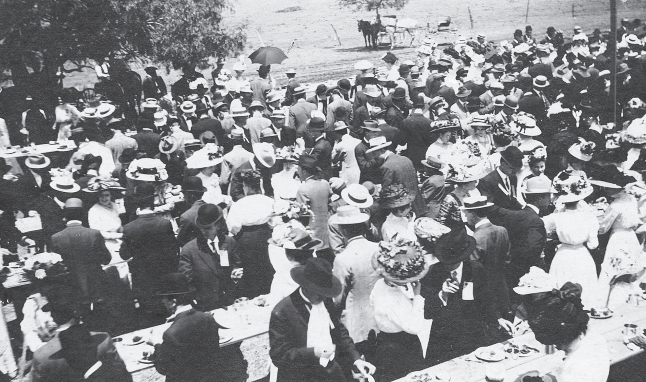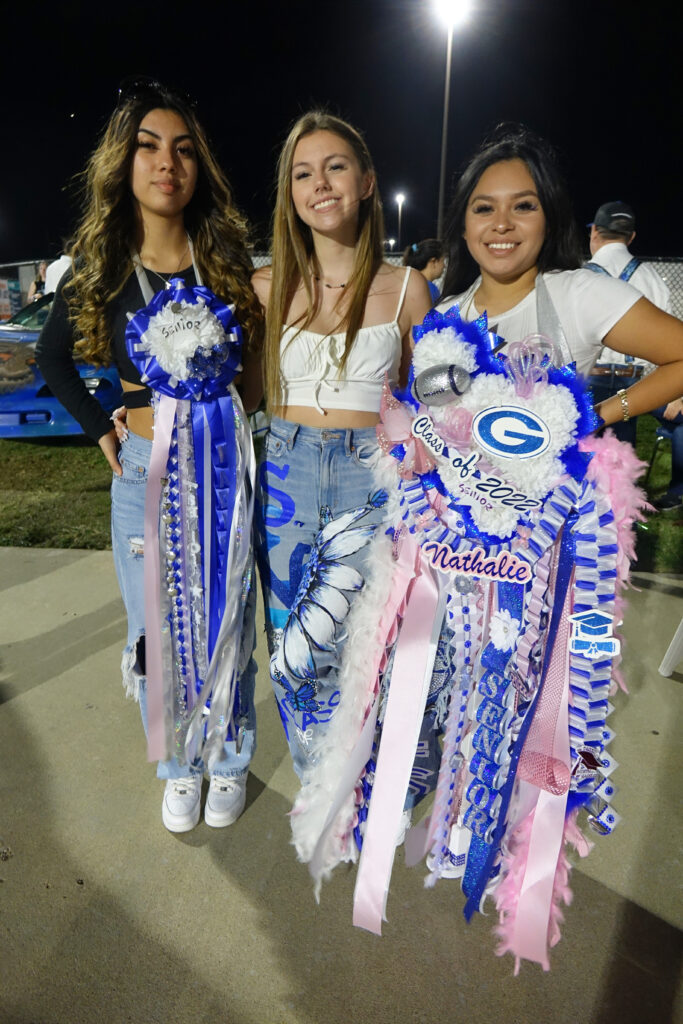Each year, high school and college alumni “come home,” greet long-lost friends and beloved teachers as they join students in the fall celebration of school spirit with pep rallies, parades, football games, dances, tailgates, and mums.

While it is unknown which school hosted the first homecoming celebration, gatherings began taking place in the early 1900s at colleges like Southwestern, Baylor, Michigan, Indiana, and Missouri. “It was beyond any doubt the greatest day known in the history of any educational institution in the State,” said Southwestern’s newspaper, The Megaphone, after the inaugural event in 1909 (facing page). The event was inspired by a former Southwestern employee, Allen K. Ragsdale, who suggested that former students and professors be invited back to the university on San Jacinto Day. It turned into a community initiative, with Georgetown residents and former students raising funds, providing homes, decorating town buildings, and preparing and serving a barbecue picnic at San Gabriel Park, where senior classmates waited tables.
The Megaphone described it as an event that “grew out of the love borne for it by students of the last 35 years who wished once more to visit their alma mater and grasp the hands of those beloved professors who labored for their interests and to greet other students, roommates, classmates and chums of the bygone days of youth.”
TEXAS MUMS

Homecoming soon grew from an alumni reunion into a full week of school spirit festivities, from parades, football games, pep rallies, dances, and homecoming king and queen. In recent years, it has evolved to include a most extravagant, Texas-sized tradition—mums.
Originally a small chrysanthemum corsage given as a token of affection to a girl by her date to wear on the day of the homecoming football game, mums have been transformed into massive floral creations covered with ribbons, bells, glitter, lights, football trinkets, and stuffed animals. Fresh flower adornments were later replaced with artificial mums for girls who wanted to preserve the homecoming memory. Guys also get into the fun by wearing garters on their arms with smaller, less elaborate versions of the mum.
While the origin of the mum is debated—some say the first ones were worn in Missouri while others claim the tradition was born in Texas around the 1930s—the homecoming staple exploded in the Lone Star State. Today, these mega mums have grown so large that instead of being pinned they are usually worn around a girl’s neck and can hang down to her feet.
Whether you decide to go with a professional mum maker or visit a craft store and make your own, an average homecoming mum can cost hundreds of dollars.
SPIRIT OVERALLS
Another tradition unique to Texas is Senior Overalls. While no one knows for sure where or when it took root, this spirit apparel has been a staple of football season since at least the early 2000s and many schools claim a bit of fame for the scale and variety of their designs, including sewn fabric, ironed-on pictures and a total cost that is often in the triple-digits.
As much as showing spirit, the overall tradition is about spending time with friends to collaborate, share, and decorate the fabric, as well as a feeling of being connected via a quintessential senior experience. Another important priority in the making of senior overalls is to emphasize uniqueness. Most write on the bib portion of the overall, but other decorations vary. Common design features include grade level, class year, and the school mascot.
Most seniors agree the best thing to do is start with inexpensive overalls and enjoy the process rather than worrying about making them perfect. One member of the class of 2017 wrote, “Don’t care too much about how it looks. Even if you mess up, no one really notices. Mine were really bad, but I did that on purpose. I messed up, and then I thought ‘Oh, I liked that I messed up,’ so I messed up everywhere, on purpose.”
